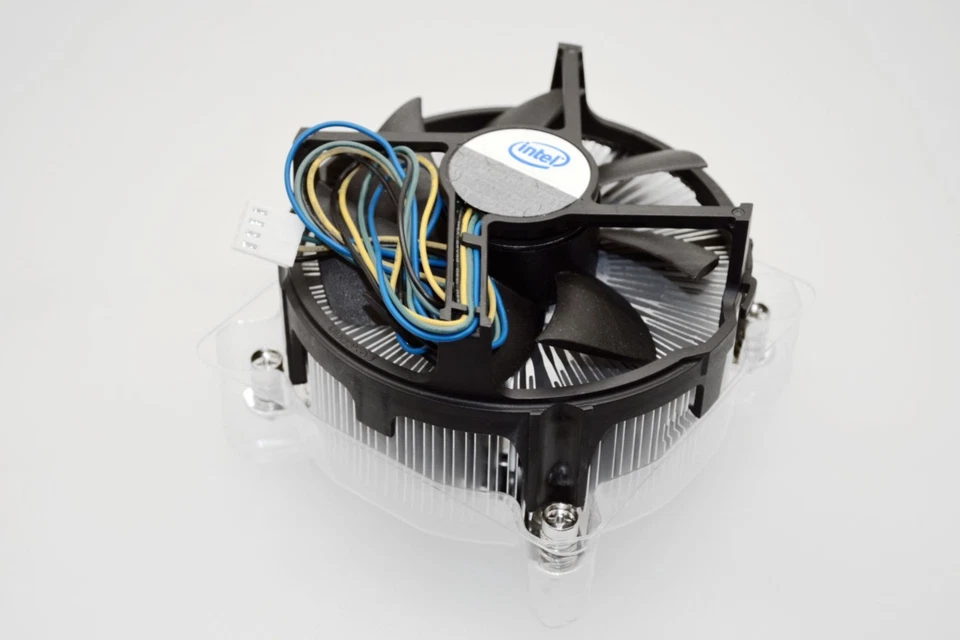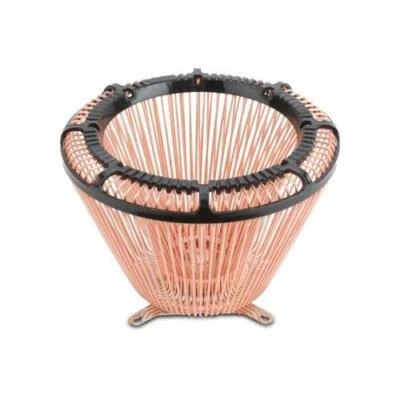Copper CPU Fans with Heatsinks
Shop by category
4,766 results
Sort: Best Match
- S$ 46.67S$ 44.86 shipping160 watching
- S$ 22.61S$ 63.66 shipping116 watching
- S$ 39.53S$ 44.65 shipping107 watching
- Brand New · IntelS$ 56.50S$ 44.24 shipping178 sold
- Brand New · LenovoS$ 52.33or Best OfferFree international shipping
- Brand New · UnbrandedS$ 49.47or Best OfferS$ 14.14 shipping
- Brand New · UnbrandedS$ 106.62or Best OfferS$ 7.78 shipping
- S$ 32.51or Best OfferS$ 47.84 shipping211 watching
- Brand New · UnbrandedS$ 74.72or Best OfferS$ 1.85 shipping
- Brand New · Cooler MasterS$ 41.72S$ 74.28 shipping48 watching
- Brand New · ThermalrightS$ 85.62S$ 31.89 shipping
- Brand New · IntelS$ 42.43Free international shipping
- S$ 148.86S$ 10.28 shipping
- S$ 42.36or Best OfferS$ 41.90 shipping64 watching
- Brand New · DynatronS$ 33.83S$ 41.66 shippingOnly 1 left!
- US Seller,Free Shipping,30 Days Returns,1 Year WarrantyBrand New · VetrooS$ 49.49S$ 30.82 shipping211 watching
- Brand New · ebm-papstS$ 223.07or Best OfferS$ 19.80 shipping
- Brand New · IntelS$ 56.50S$ 45.16 shipping64 watching
- S$ 41.00S$ 62.23 shipping96 watching
- Brand New · IntelS$ 38.11S$ 62.14 shipping24 watching
- Brand New · UnbrandedS$ 53.73S$ 3.73 shipping
- Brand New · ebm-papstS$ 350.10or Best OfferS$ 14.14 shipping
- S$ 25.29S$ 1.40 shipping
- S$ 37.83S$ 40.86 shipping66 watching
- S$ 25.29S$ 1.40 shippingOnly 1 left!
- S$ 69.99or Best OfferS$ 2.81 shipping
- Brand New · CorsairS$ 122.39Was: S$ 128.84was - S$ 128.84S$ 53.36 shipping
- Brand New · be quiet!S$ 57.11Was: S$ 60.12was - S$ 60.12S$ 36.73 shipping28 watching
- S$ 41.72or Best OfferS$ 48.96 shipping
- ✅ AMD AM3 AM4 ✅Intel LGA 1156 1155 1151 1200 1700Brand NewS$ 31.38Was: S$ 52.31was - S$ 52.31S$ 30.28 shipping69 watching
- Brand New · DeepcoolS$ 63.63S$ 104.78 shipping
- S$ 46.32S$ 43.94 shipping114 sold
- S$ 38.82Was: S$ 40.87was - S$ 40.87S$ 9.62 shipping
- Brand New · UnbrandedS$ 121.05or Best OfferS$ 8.34 shipping
- S$ 188.96S$ 49.19 shipping13 watching
- Brand New · ebm-papstS$ 89.01or Best OfferS$ 16.26 shipping80 sold
- Brand New · ebm-papstS$ 148.51or Best OfferS$ 16.97 shipping
- Brand New · Cooler MasterS$ 76.36S$ 31.61 shipping
- Brand New · UnbrandedS$ 20.54Was: S$ 22.81was - S$ 22.81Free international shipping
- Brand New · UnbrandedS$ 105.63Was: S$ 117.37was - S$ 117.37S$ 57.63 shipping
- S$ 81.32or Best OfferFree international shipping
- S$ 137.18or Best OfferS$ 85.39 shipping6 watching
- Brand New · ebm-papstS$ 31.79or Best OfferFree international shipping
- Brand New · UnbrandedS$ 90.80S$ 21.21 shipping
- Brand New · UnbrandedS$ 65.54or Best OfferS$ 3.73 shipping
- S$ 28.27S$ 54.77 shipping58 watching
- S$ 19.52or Best OfferS$ 1.41 shipping
- Brand New · UnbrandedS$ 98.14or Best OfferS$ 1.84 shipping
- S$ 125.87Free international shipping
- S$ 17.61Was: S$ 18.73was - S$ 18.73or Best OfferS$ 7.07 shipping21 watching
- Brand New · ebm-papstS$ 34.58Was: S$ 40.67was - S$ 40.67Free international shipping
- Brand New · Cooler MasterS$ 140.45S$ 37.45 shipping
- S$ 1,385.82S$ 26.48 shippingOnly 1 left!
- Brand New · UnbrandedS$ 65.54or Best OfferS$ 3.73 shipping
- Brand New · LenovoS$ 52.33Free international shipping
- Brand New · ZalmanS$ 140.01S$ 107.03 shipping
- S$ 40.84or Best OfferFree international shipping
- Brand New · IntelS$ 16.97S$ 14.14 shipping
- S$ 323.87S$ 14.14 shipping6 watching
- Brand New · ASUSS$ 99.89Was: S$ 119.87was - S$ 119.87S$ 26.87 shipping4 watching

































































